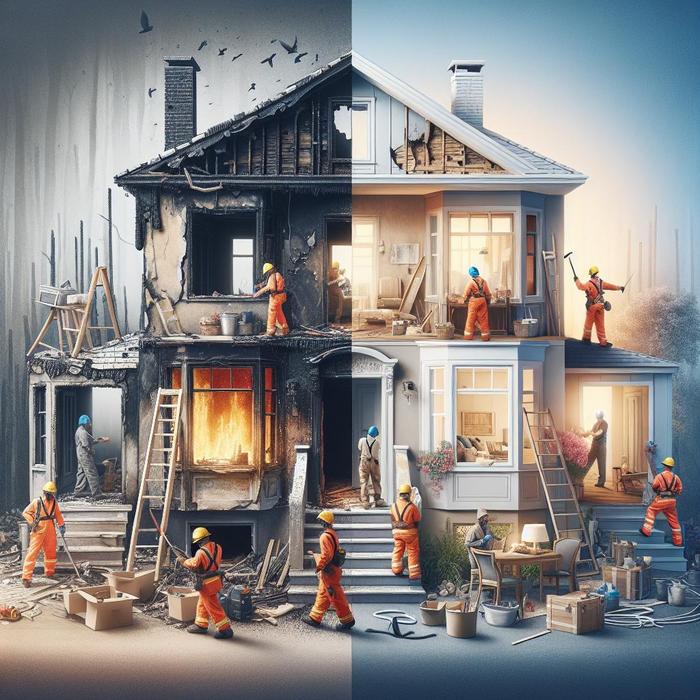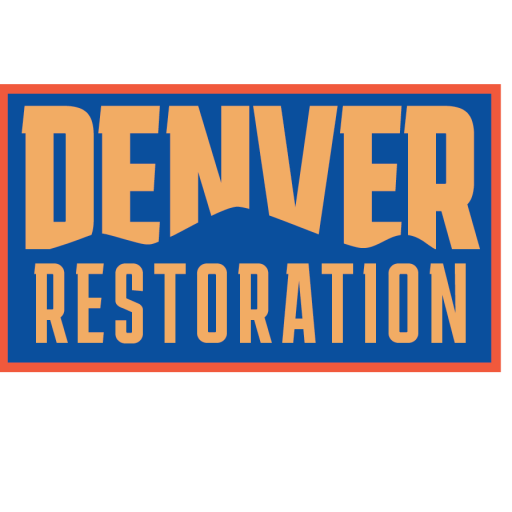Understanding Fire Damage Restoration
As an unwelcome visitor, fire can cause catastrophic effects on your property. This is why the process of fire damage restoration is crucial. It’s more than just replacing burned items; it’s about providing security and ensuring safety for your cherished home or business. But how exactly does this process work, and why is it essential?
The Importance of Prompt and Proper Restoration
After a fire, your priority is to restore safety, functionality, and comfort to your home. However, the aftermath of fire damage can continue to impact your property if not addressed timely and adequately. Here’s why prompt and proper home restoration is essential.
Prevent Further Damage
Residual soot and smoke can continue causing damage long after the fire is extinguished. Acids in soot can discolor surfaces and cause corrosion. The lingering smell of smoke can infiltrate walls and fabrics, creating an unpleasant environment. Effective fire damage restoration targets these hidden culprits to prevent further damage.
Ensure Safety
Fires can affect the structural integrity of a house, making it a danger zone even after the flames are extinguished. Restoration professionals know how to assess this and take the necessary actions to ensure safety. They also follow strict Environmental and Health Safety regulations to protect both themselves and the occupants during the restoration work.
Speed up Recovery
By handling the situation promptly and correctly, you can speed up your recovery process. A swift return to normalcy is one of the significant advantages of hiring a professional restoration service.
Key Elements of the Fire Damage Restoration Process
Restoration is a detailed process. Understanding its key elements can instill trust in the process, as well as the professionals undertaking it.
1. Initial Assessment
Restoration professionals first assess the extent of the damage and develop an efficient strategy tailored to your specific situation. This Damage Assessment and Estimation process aids them in determining the right course of action.
2. Securing the Property
The next step is to secure the property to prevent further harm. This might include boarding up missing windows, doors, and sealing off unsafe areas.
3. Smoke and Soot Removal
Post securing the property, the team will use specialized equipment and techniques to remove soot and smoke from walls, ceilings, and other surfaces.
4. Cleaning and Sanitizing
The team will then clean all restorable items and structures damaged by the fire. They will sanitize these items using a range of techniques to restore them to their original condition as much as possible.
Trusting the Experts in Fire Damage Restoration
Restoration after a fire incident is a complex task, often requiring expertise in multiple areas. For example, it requires understanding how to liberate your home from lasting smoke odors with advanced techniques.
Furthermore, it is about knowing how to handle mold remediation since excess water used to extinguish the fire can lead to mold growth. By trusting these tasks to professionals, you not only ensure a thorough job but also save yourself time, stress, and potential further damage.
Restoring your property after fire damage can be daunting. However, with clear understanding of the restoration process and trusting the right experts, you can make the journey to recovery easier. Remember, the goal is not just to repair fire damage, but to also bring back the comfort and safety of your home or workplace.
Insurance and Legal Compliance in Fire Damage Restoration
Insurance is an essential part of fire damage restoration, as the cost implications can be significant without it. You need an adequate understanding of the insurance policies to navigate this arduous process smoother. Fire damage restoration firms are often well-versed in handling insurance claims and can help you understand the legalities related to it.
In case of a fire, the policyholder should promptly inform the insurance company and file a ‘proof of loss claim,’ which typically includes a detailed inventory of damaged property, its value, and an estimate of repair costs. Professional damage restoration firms can assist in completing these evaluations accurately.
Moreover, some states demand certain licenses and qualifications for firefighting damage restorers. Compliant firms ensure that all the legal requirements are met, thus averting any potential legal hitches post-restoration.
Customer Communication in Fire Damage Restoration
Open and timely communication is important during fire damage restoration. Property owners need regular reassurances and updates regarding the progression of the restoration activities. This helps in managing expectations and decreasing anxiety levels.
Restoration firms are expected to converse with customers about the projected timeline, restoration plans, equipment used, and safety precautions. They also help customers understand how to prevent recurring fire incidents by conducting regular fire safety audits.
Crisis Management in Fire Damage Restoration
Crises management in fire incidents involves making decisive decisions to minimize damage and expedite the restoration. Certain fire incidents might necessitate immediate evacuation or expulsion of certain parts of the property. Efficient crisis management ensures safety while coordinating a swift response to these exigencies.
Understanding Water Damage Restoration
Often, fire fighting measures may cause water-related damages to the property, thus, while addressing fire damages, water damage restoration becomes equally critical. The professionals with their specialized equipment help dry out the property and ensure no moisture is left behind, which could potentially lead to mold growth.
Just like fire damage restoration, water damage restoration also includes assessment of the extent of the damage, deterrence of any more damage, removal of excess water, drying and dehumidification, cleaning, and sanitization of the affected spaces.
1. Initial Water Damage Assessment
Immediately following your call, water damage restoration professionals will inspect the sites affected by water. The assessment is crucial to devise an effective plan for water removal and restoration.
2. Water Removal / Water Extraction
After the assessment, the team uses powerful pumps and vacuum units to remove hundreds or thousands of gallons of water from your property. This step helps reduce drying time and prevents secondary water damage and mold and bacterial growth.
Trusting the Experts in Water Damage Restoration
The process of water damage restoration can be less daunting when left to professional hands. Qualified experts can handle delicate tasks like moisture mapping, mold prevention, lead abatement, and more while averting the possibility of future damage.
If you unfortunately experience a fire at your property, remember, no matter how much you want to take immediate control, it’s best to leave the complicated task of restoration to the experts. Their in-depth understanding of damage rescue methods, advanced equipment, and dedicated support ensures your property is restored to its former glory quickly and efficiently.
Don’t be daunted by the process of restoration. It’s a meticulous task with significant concerns for safety, health, and structural integrity, but with the right team by your side, you can rebuild and restore. An efficient, certified, equipped, and empathetic restoration service can indeed turn your fire or water-damaged property back into a home or a working space.

